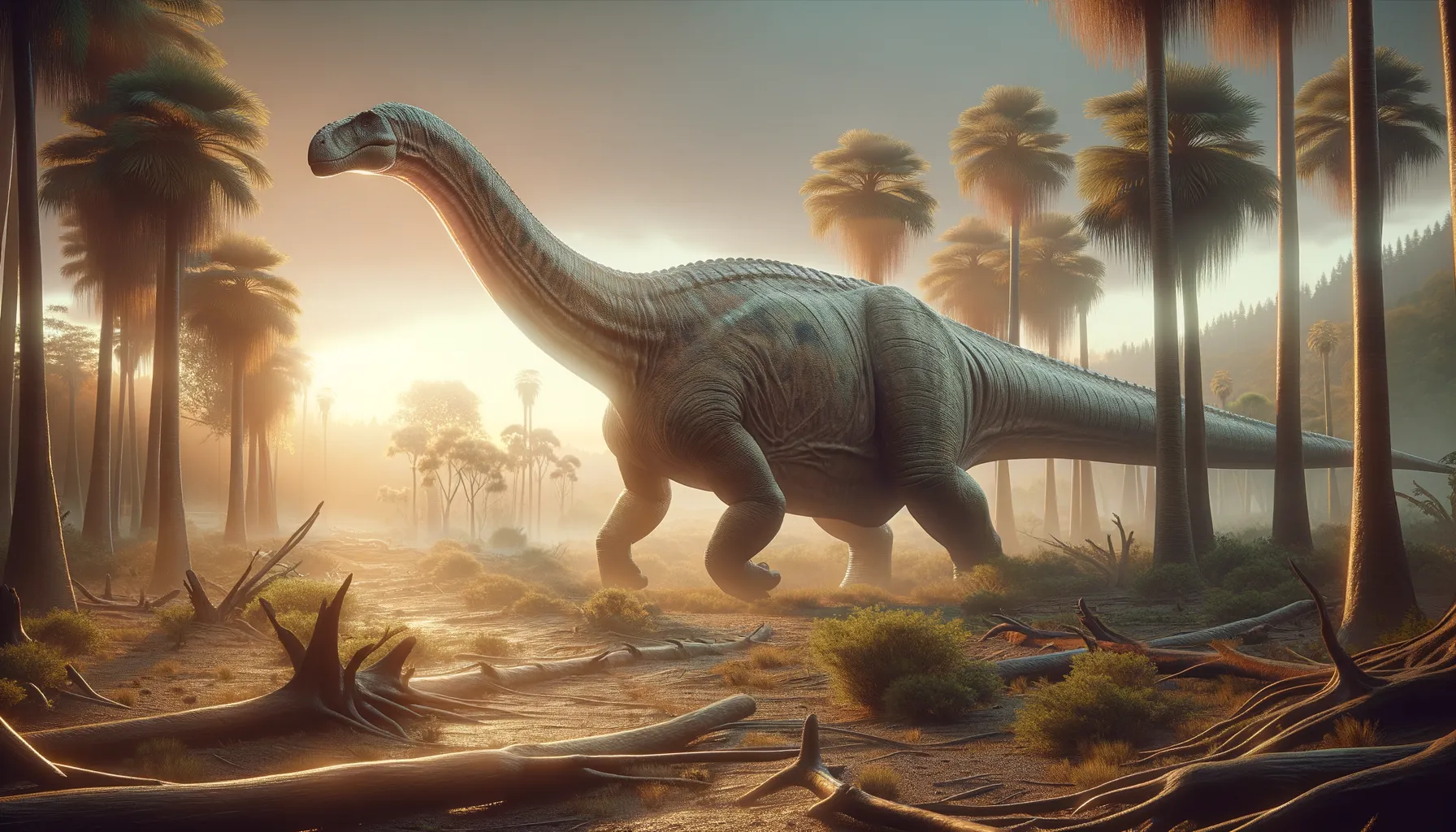
Chuanjiesaurus
A Jurassic giant with a long story to tell!
Period
Jurassic
Length
Could reach lengths of up to 25 meters.
Height
Stood approximately 15 feet tall at the hips.
Weight
Estimated around 20 to 30 metric tons.
Chuanjiesaurus was a massive sauropod dinosaur that roamed the Earth in present-day China during the Middle Jurassic period. Its impressive size and long neck helped it forage for plant material in a variety of environments. This herbivorous giant contributes valuable knowledge to our understanding of sauropod evolution and diversity. Fossils of Chuanjiesaurus provide key insights into the anatomy and lifestyle of these fascinating creatures, enriching our understanding of prehistoric life.
Diet
Chuanjiesaurus was a herbivore, primarily feeding on a wide variety of plants. This dinosaur would have used its long neck to reach high vegetation and possibly sweep through low-growing plants as well.
Hunting
Chuanjiesaurus was not a predator and did not hunt. It relied on its long neck to access different layers of vegetation, feeding on large quantities of plants to sustain its massive body.
Environmental challenges
During the Jurassic period, the environment of Chuanjiesaurus was marked by fluctuations in climate and vegetation. It faced competition from other large herbivores for food resources. Additionally, the presence of predators in its ecosystem posed constant threats, requiring these dinosaurs to remain vigilant.
Speed
Slow due to its large size and weight.
Lifespan
Could live several decades in the wild.
First discovery
Discovered in the early 1990s in China.
Fun Facts
- Chuanjiesaurus was a massive dinosaur that lived during the Middle Jurassic period, around 165 million years ago, and roamed what is now known as China.
- It was a long-necked dinosaur, belonging to the sauropod family, which also includes the famous Brachiosaurus and Diplodocus.
- Chuanjiesaurus grew to an impressive length of about 25 meters (82 feet), making it one of the larger dinosaurs of its time.
- Its fossils were first discovered in the Chuanjie Formation in Yunnan Province, China, which is how it got its name.
- Chuanjiesaurus likely fed on plants and leaves high up in the trees with its long neck, acting like nature's pre-modern ladder.
- It lived alongside other fascinating dinosaurs and prehistoric creatures, including theropods and stegosaurs, giving it interesting neighbors in its ecosystem.
- Despite its size, Chuanjiesaurus was likely a gentle giant that spent much of its time foraging for food in lush, green environments.
Growth and Development
Chuanjiesaurus, like other sauropods, likely experienced rapid growth rates during its early years. This fast growth was crucial for survival, as reaching a larger size quickly would have deterred predators. Over time, individuals developed robust limbs and elongated necks typical of the sauropod lineage.
Habitat
Chuanjiesaurus inhabited forested regions with abundant vegetation, ideal for its plant-based diet. These areas were likely populated with numerous other plant-eating dinosaurs and a variety of flora. The presence of rivers and water sources would have been crucial to sustain such a large creature.
Interaction with other species
Chuanjiesaurus likely lived in herds for protection against predators, relying on safety in numbers. It might have competed with other herbivore species for food, but its long neck allowed access to unclaimed foliage. Occasionally, it would have encountered carnivorous dinosaurs, requiring group defense.
Natural lifespan
Chuanjiesaurus is believed to have lived up to 70 years.
Reproduction
Chuanjiesaurus, like many sauropods, likely laid eggs in nests constructed on the ground. Reproduction strategies might have involved communal nesting areas to protect the young. Little is known about parental care, but it is possible that hatchlings were left to fend for themselves.
Social behaviour
Chuanjiesaurus was probably social, living in groups for enhanced survival. Being in a herd not only offered protection but also facilitated better foraging efficiencies. Hierarchical structures might have existed within groups, although specific social behaviors remain speculative.
Fossil locations
Fossils of Chuanjiesaurus have been discovered primarily in the Lufeng Formation in Yunnan Province, China. These locations have yielded important sauropod remains, contributing greatly to our knowledge of dinosaur diversity in Asia. The finds have helped paleontologists piece together aspects of its physical structure and environment.
